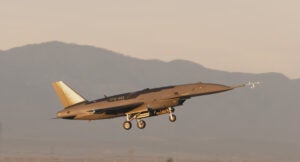
A DoD sharing or abandonment of the S-band portion of the electromagnetic spectrum could harm military forces and entail significant work around costs, Air Force Gen. Charles Q. Brown told the Senate Armed Services Committee (SASC) during his July 11 nomination hearing to become the next Chairman of the Joint Chiefs of Staff. Since August 2020, Brown has served as the Air Force's 22nd chief of staff. "Proposals for DoD to share or vacate the S-band may result in setting…














